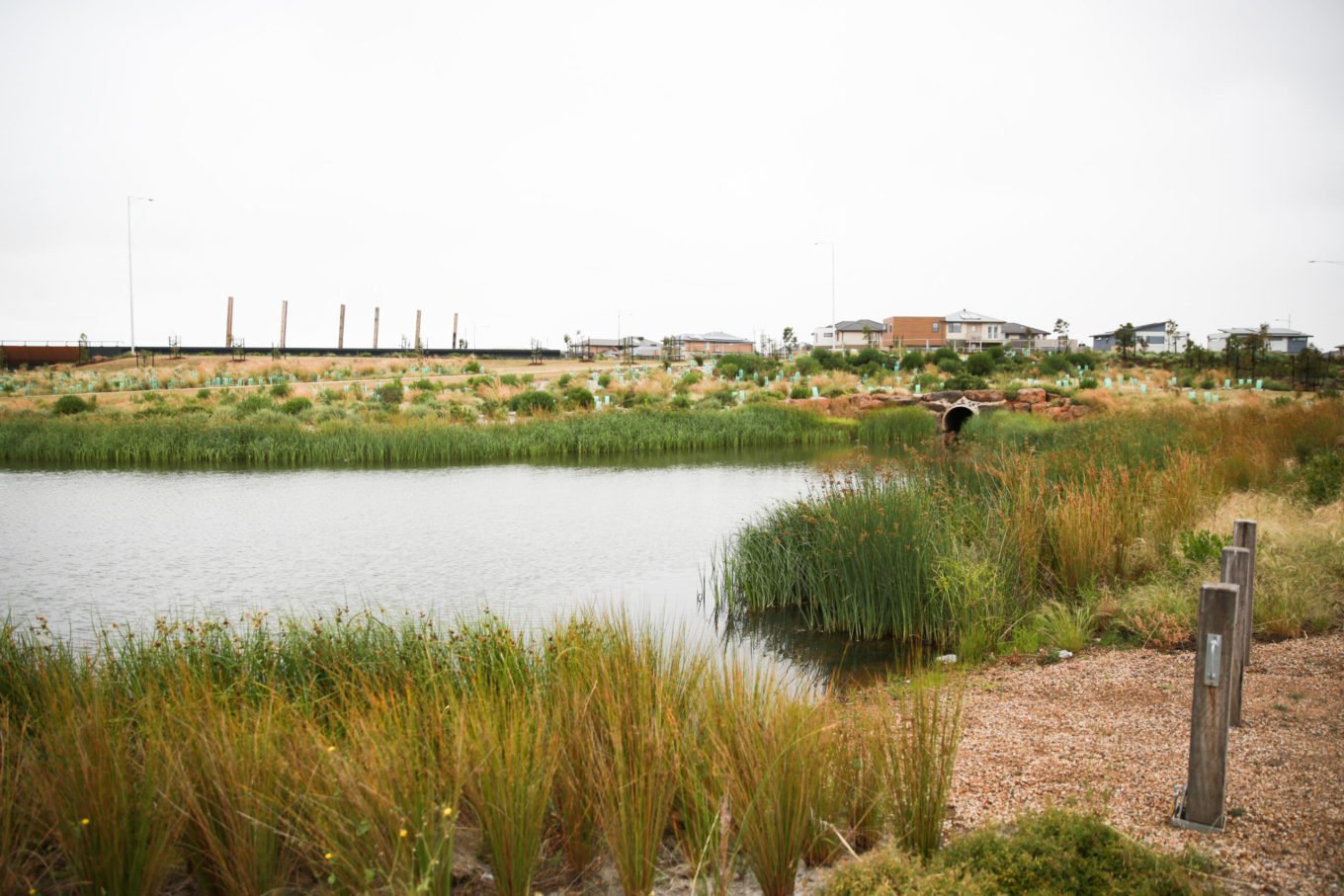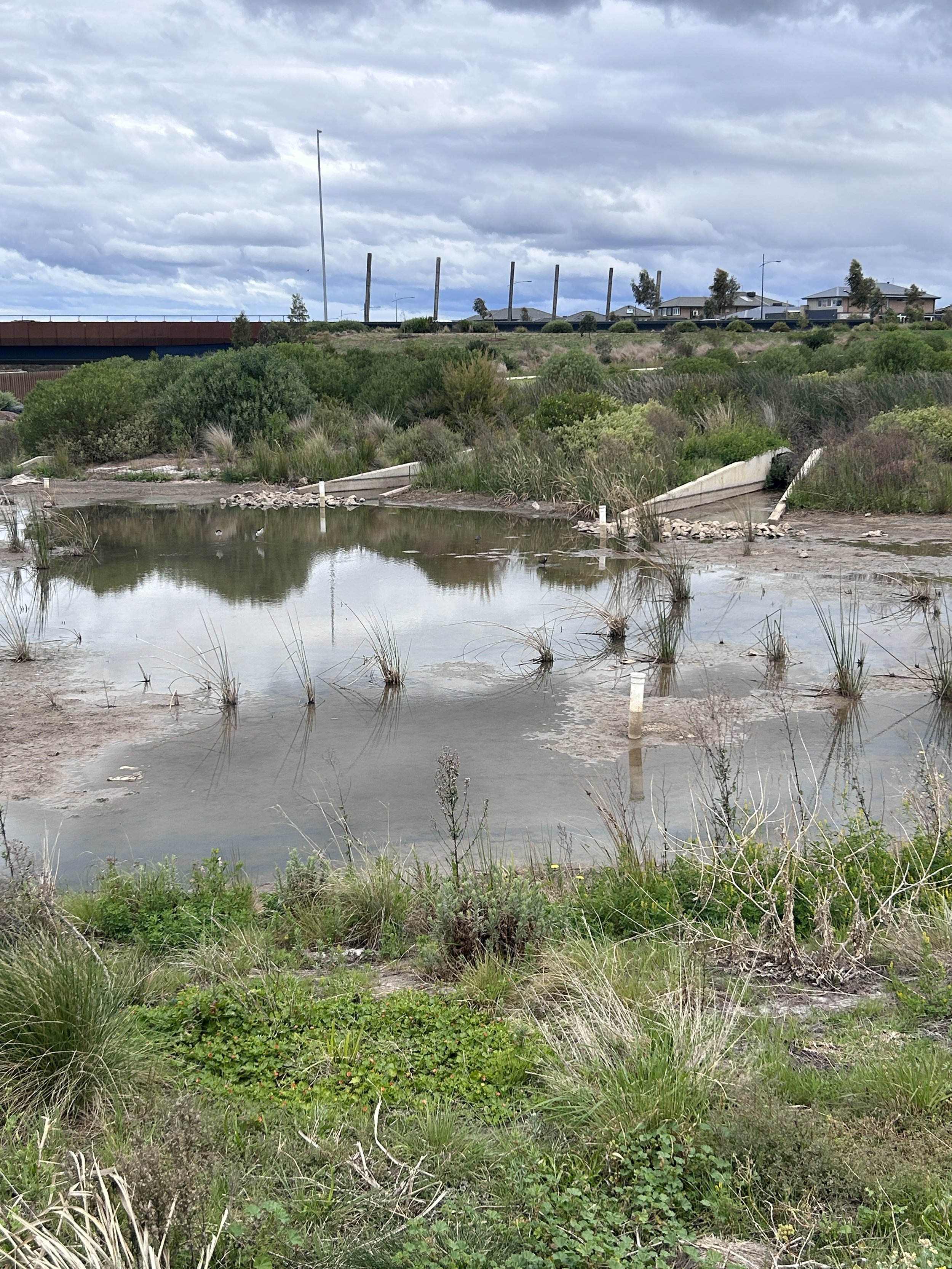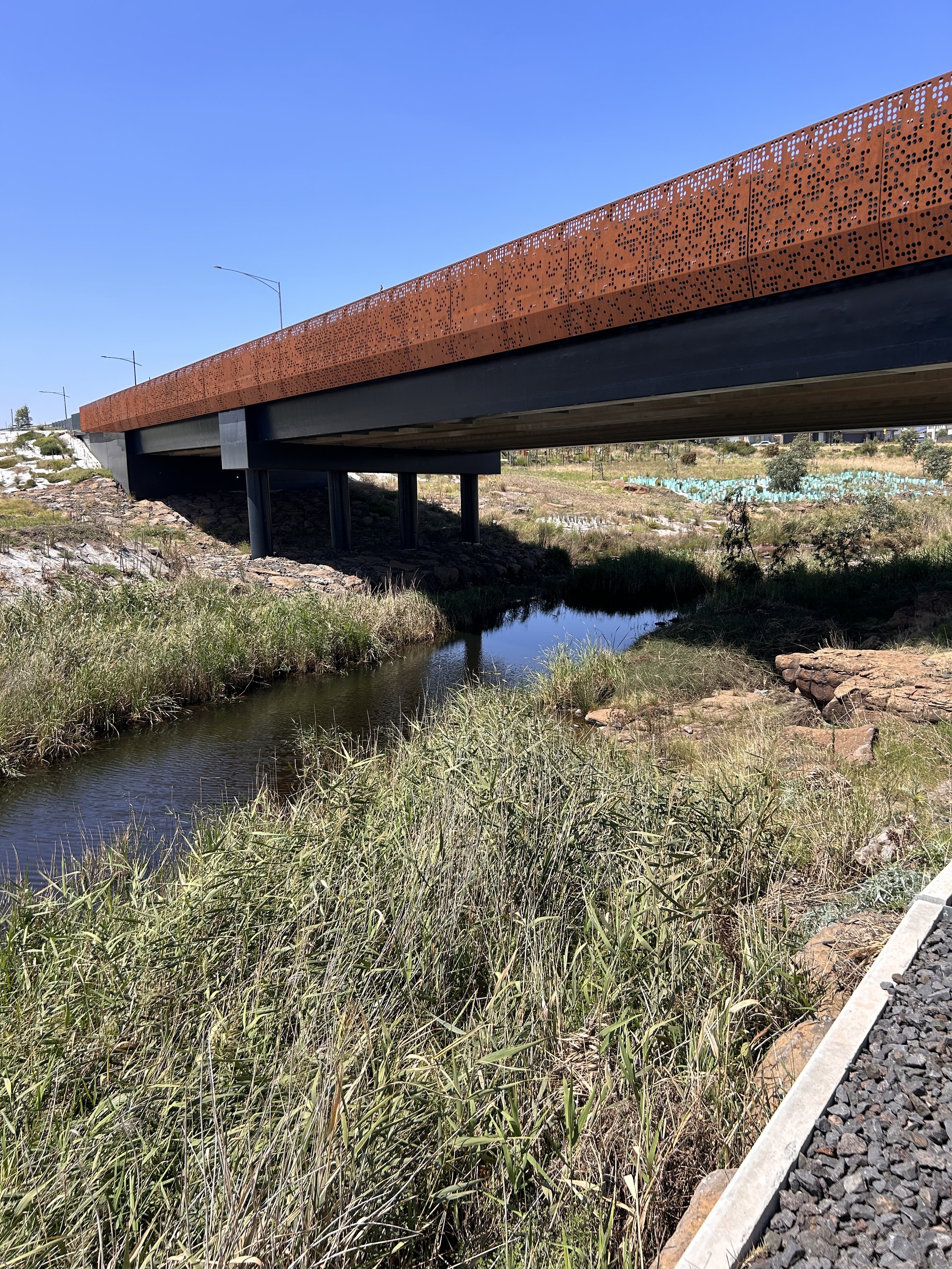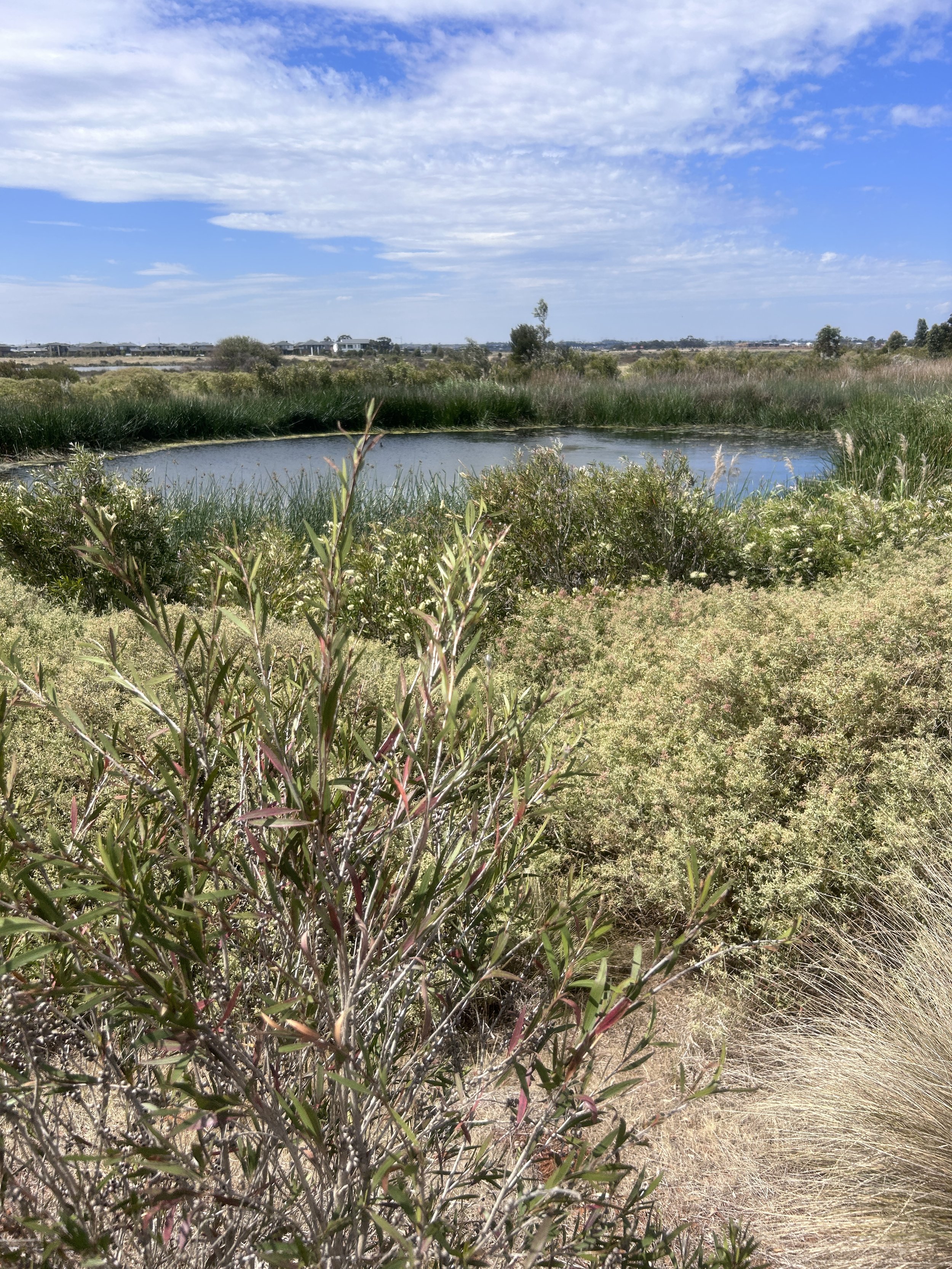
Stormater Sediment Ponds
These wetland ponds are designed to filter stormwater before that water is released into Kororoit Creek or Deanside Wetlands. The pond which is has the most water is known as a Sediment Pond, while the outside pond (if constructed with multiple ponds) drains dry and fills when there is excessive rain and is known as a Rain Garden. These sediment ponds exist in a number of locations along the wetlands and creek including on Featherwood Drive, Lagoon Drive, Mangrove Rd, Cascade Drive, and between the bridges off Taylors Rd & Bonnie Brook Rd (which also has a rain garden filtration pond).
Why are they necessary?
Pre-development, all of this land had vegetation and exposed earth. Now that the land has been developed with roads, pathways, houses and more, this caused a few environmental problems which these storm water ponds are now addressing:
Not as much of the rain can soak into the ground due to the presence of hard, impermeable surfaces (eg roads, roofs, concrete). This means there is more run off into the creek or Deanside Wetland.
Vegetation in the area has also been reduced due to development. This vegetation would utilise the rainfall for growth, taking it out of the soil before it made it to the waterways. With less vegetation, we have more water in the system and more run off.
The ponds also provide habitat for aquatic life (eg frogs), insects, reptiles, wildlife and bird life.
How do they work?
The storm water comes off roads, roofs, and paths and is collected in gutters and taken down drains into the storm water system. The water flows through these pipes to the sediment pond. The sediment pond:
Slows the water flow down to reduce erosion by holding it in the pond. If the water flowed straight out of the stormwater pipes into the creek or wetland, the banks of the creek would erode and there would be more flooding events. The sediment ponds prevent this.
The use of aquatic plants slows the water flow down further, capturing debris (eg, rubbish, sticks, leaves, mud etc) which can be removed before they make it to the creek or wetland
By holding the water and preventing it moving, the sediment suspended in the water (dirt, dust, etc) is able to drop out of suspension to the bottom of the pond. The top, cleanest layer of water flows out of the pond down the overflow channel to the creek or wetland. Some storm water ponds have pipes at the bottom of a layer of gravel aggregate — the water is filtered as it passes through this aggregate before escaping via the drainage pipes at the bottom of the pond and into the rain garden where further filtration occurs (see below)
The overflow channel to the creek has been built with large stones from the area which prevent the channel from eroding. The native plants in the channel also work to slow the water down further and filter out any debris which has made it out of the pond.
During a heavier, or longer, storm or wet weather event, the channels and stand pipe to the rain garden are activated, allowing water to flow out of the sediment pond into the rain garden. The rain garden’s base is a series of stone aggregates which allow for water to pass through but sediments to remain behind. This filters out finer particles of sediment before the water is released down the overflow channel and into the creek
What can we do?
Keep the sediment ponds and drainage channels free from debris and rubbish
Ensure that only water flows down our storm water drains on our street and in our homes. NO CHEMICALS can enter into this system without causing pollution issues in the ponds and ultimately the creek
Clean up litter, leaves and debris from our gutters on our homes and in the street
Sediment pond with aquatic plants
Deanside Wetlands
Raingarden in action
Kororoit Creek under Bonnie Brook Rd
Mangrove Road Sediment Pond
Gilderton Ave Sediment Ponds
Taylors Rd Sediment Pond







